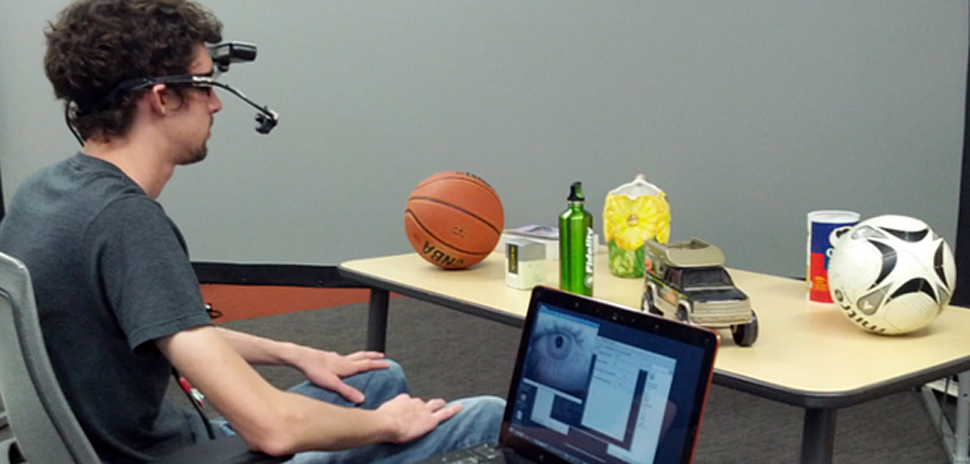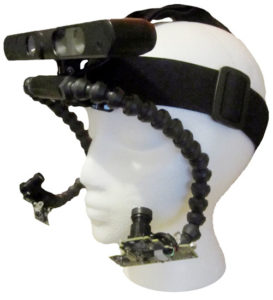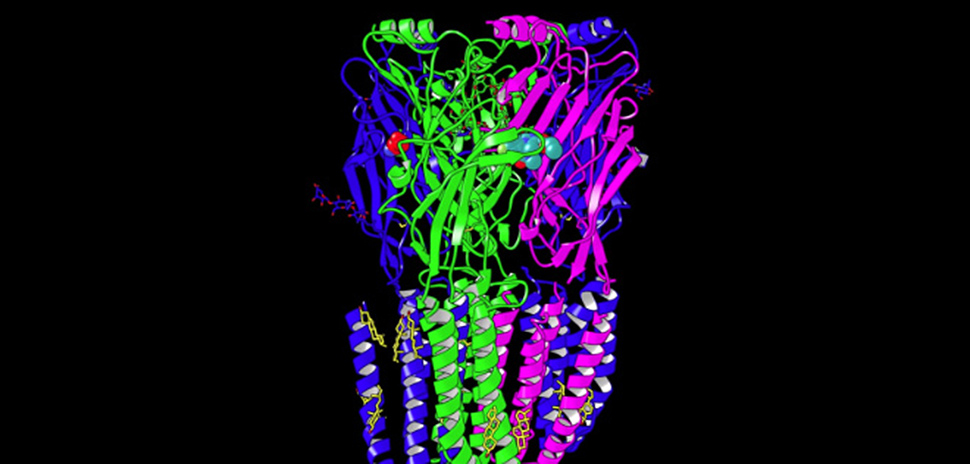$22.5M FACILITY AT UTSW HELPS CAPTURE STRUCTURE OF BRAIN RECEPTOR
![]() Researchers at UT Southwestern Medical Center have figured out the structure of a major brain receptor they said is a treatment target for people with epilepsy and anxiety.
Researchers at UT Southwestern Medical Center have figured out the structure of a major brain receptor they said is a treatment target for people with epilepsy and anxiety.
In the journal, Nature, researchers published findings of the first atomic structure for the receptor bound to a drug used to reverse anetsthesia and treat sedative overdoses.
“This study reveals the first high-resolution structural information for one of the most abundant and important neurotransmitter receptors in the brain,” said Dr. Ryan Hibbs, assistant professor of neuroscience and biophysics with the Peter O’Donnell Jr. Brain Institute at UT Southwestern, said in a release.

From the left: Drs. Ryan Hibbs, Colleen Noviello, and Shaotong Zhu [Photo courtesy of UT Southwestern]
Hibbs said that many drugs work on the GABAA receptor, including the benzodiazepines that are are used for anesthesia during surgery and prescribed to treat epilepsy, anxiety, and insomnia. Solving the structure of the receptor could lead to better treatments for those conditions, according to UTSW.
Realizing the structure took very specialized equipment at the university’s $22.5 million cryo-EM facility. At the facility, samples can be frozen quickly so as to deter ice crystal formation and viewed at roughly minus 300 degrees Fahrenheit, according to UTSW.
Dr. Shaotong Zhu, the lead author in this study and a postdoctoral researcher in neuroscience, used crystallography and found crystals that diffracted X-rays very poorly.
At the same time, she also used cryo-electron microscopy (cryo-EM), and found success with that method. What she discovered provides the first 3D atomic structures of the receptor bound to its neurotransmitter GABA and flumazenil, a drug used to reverse anesthesia and to treat benzodiazepine overdoses, according to UTSW.
Find out more about the study here.

Christopher McMurrough demonstrates his new technology. [Photos courtesy of UT Arlington]
UTA PATENTS NEW TECH THAT CAN ASSIST PEOPLE WITH DISABILITIES
The University of Texas at Arlington has received a patent for a new technology that could dramatically improve the lives of people with disabilities such as ALS and spinal injuries — conditions in which a person often loses use of their legs, arms, or hands.

3-D point of gaze headset
UTA said the revolutionary technology is able to scan a user’s eye movements and enable them to navigate mobility platforms, such as electric wheelchairs, without the use of hands.
The technology also would allow users to communicate to a robotic platform when they would like to use an object, such as a glass of water.
Inventor Christopher McMurrough, a computer science and engineering lecturer at UTA, was inspired to create the 3-D point of gaze headset after seeing his mother-in-law with ALS having difficulty with eye-tracking devices currently on the market. The technology evolved from McMurrough’s doctoral thesis.
“The latest version of our device can be worn as a pair of ski goggles with cameras on top and eye-trackers embedded in the lenses, making it very easy for patients to use it over long periods of time as it moves with them,” McMurrough said in a release.
It combines 3D mapping using a 3D camera on the top of the glasses, with eye tracking to collect data that is then put into a program that models the user’s surroundings and what is being looked at by projecting the line of vision out and crossing it with the 3D view from the camera.
McMurrough said the technology also could be important in tracking medical problems that affect eye movement patterns — things such as stroke, low blood pressure, and other conditions.
“We are also seeing that it could have implications for video games and emerging augmented reality applications,” he said.

Gulab Zode and Ramesh Kasetti work in the lab at UNTHSC. [Photo courtesy of UNTHSC]
RESEARCHER SEEKS TREATMENT FOR GLUCOCORTICOID-CAUSED GLAUCOMA
Sometimes drugs used to treat one condition can cause another.
That’s the case with glucocorticoids that help reduce inflammation, pain, and treat conditions such as allergies and rashes. They also can cause glaucoma, according to the University of North Texas Health Science Center.
“We know that when people are treated with glucocorticoids, one of the possible side effects is increase intraocular pressure.”
Gulab Zode
Researchers on a team at UNTHSC led by Gulab Zode have discovered how glucocorticoids elevate intraocular pressure in the eye — one of the known side effects — and recently published their findings in a paper in the Journal of Biological Chemistry.
“We know that when people are treated with glucocorticoids, one of the possible side effects is increased intraocular pressure,” Zode said. “About 30 percent to 40 percent of patients develop this and if they don’t get treated, they experience vision loss.”
Zode’s aim is to develop a treatment.
“There are no treatments that target the pathology of the disease, there are only drugs that act on the symptoms,” Zode said. “I want to know what causes the damage so that targeted treatment could be developed.”
UNT PROF WORKS TO IMPROVE NUCLEAR WASTE STORAGE

Jincheng Du
A professor at the University of North Texas is working to develop new glass materials for the storage of nuclear waste, and he’s found that a gel layer that forms on the glass has unique properties that could hold the key to the material’s long-term durablity.
“The problem is corrosion of the material used to hold waste. Over time, environmental conditions lead to corrosion and the release of radioactive elements into the environment. We want to prevent that,” Jincheng Du said in a release. “Borosilicate glasses have high durability and are the chosen form to immobilize high-level nuclear waste. The key is to maintain durability in the very long term: thousands to hundreds of thousands of years.”
“The key is to maintain durability in the very long term: thousands to hundreds of thousands of years.”
Jincheng Du
Du said that by combining a wide range of analytical techniques and advanced computer simulations, his team made significant progress in understanding the important characteristics of the gel layer that formed on the glass.
“The gel layer prevents water transport and makes the glass chemically durable in the long term,” Du said.
Here’s how it works:
Using a process called vitrification, nuclear waster is melted with glass-form additives into a glass that fully contains the waste, Du said. That molten glass is then poured into a stainless steel container and stored underground at sites selected for their geological stability.
Discover more about Du’s research here.
READ NEXT
Discovery: E-Whiskers May Lead to Electronic Human Skin, $750K Grant to Fund Neutrino Research
![]()
































































